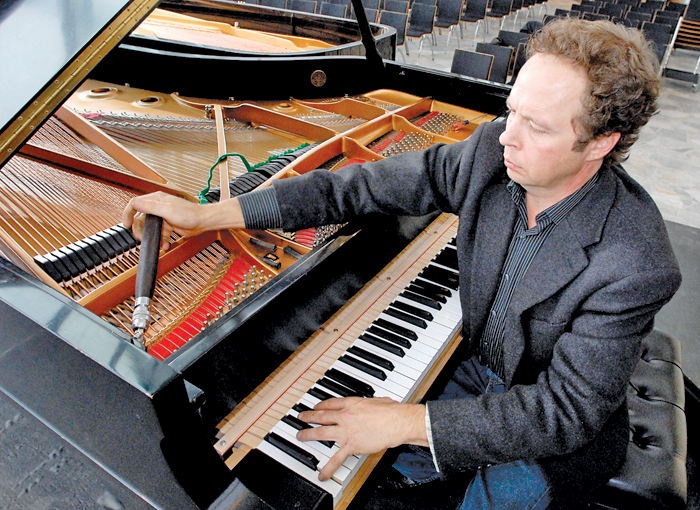Robert Sims climbs onto a stage set up in the atrium of the Hunter Museum of American Art, takes a seat on the bench in front of one of two Steinway grand pianos and pulls out a fork and a hammer.
The fork is a tuning fork that produces an A note when struck. The hammer is a tuning hammer, really a wrench, but still called a hammer because early ones functioned as both tools.
He listens carefully and uses the tuning hammer to adjust one of the hundreds of strings that make up a piano. He uses a piece of felt to silence the other strings.
When he is satisfied that the pitch of the string matches the pitch produced by the fork, he adjusts the other strings to match the first one. He tunes the rest of the piano based on the tones that arise from that note.
Other than the tuning fork he uses to get started, the only things he uses to determine pitch are his ears.
Through talent and training, he listens for "beats," the audio waves created when two notes are out of tune with each other. Making tiny adjustments, he brings the notes closer together, slowing down the beats. When the beat goes away, the string is in tune.
Sims is a piano technician with his own company, Do Re Mi Music. He also works for Summitt Pianos and is one of two technicians in Chattanooga authorized to service Steinway pianos, considered by most pianists to be the world's best.
In addition to tuning the strings, he adjusts and services the mechanisms that strike the strings and all of the roughly 7,000 parts that make up a piano. A typical tuning takes about an hour and a half, and it costs $100.
Over the years, he has tuned pianos for performances by a number of celebrities, artists as diverse as Dave Brubeck and Little Richard.
Not everyone appreciates a precise tuning, though. Sims recalls tuning a piano at a small country church, working to get it just right. But the pianist was dismayed at the result, saying "something is wrong with the piano. It don't have that ring. You ruined my piano. Fix it."
After a few questions, Robert realized that the pianist wanted that honky-tonk sound, "so I took out my hammer and knocked out a whole row of strings. Then he was happy," Sims said with a laugh. "I don't know why they hired me in the first place."
MOMENT is a weekly column by the Times Free Press photo staff that explores the seldom-told stories of our region. To hear this story in their own words, go to the MOMENT page.

